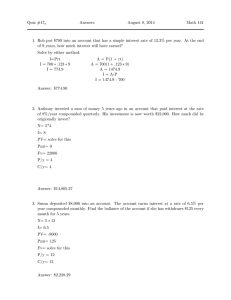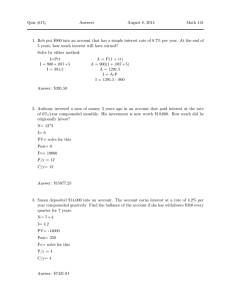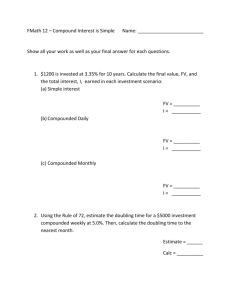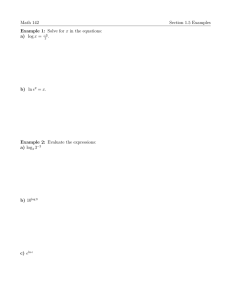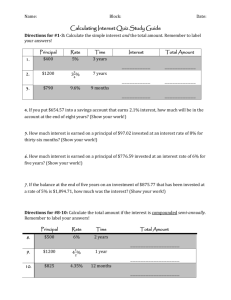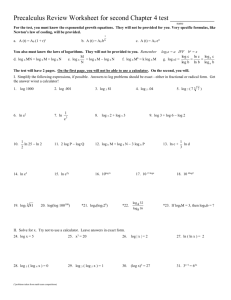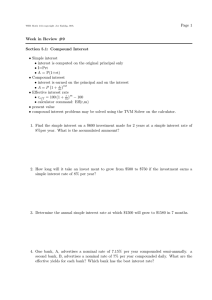Document 10581452
advertisement
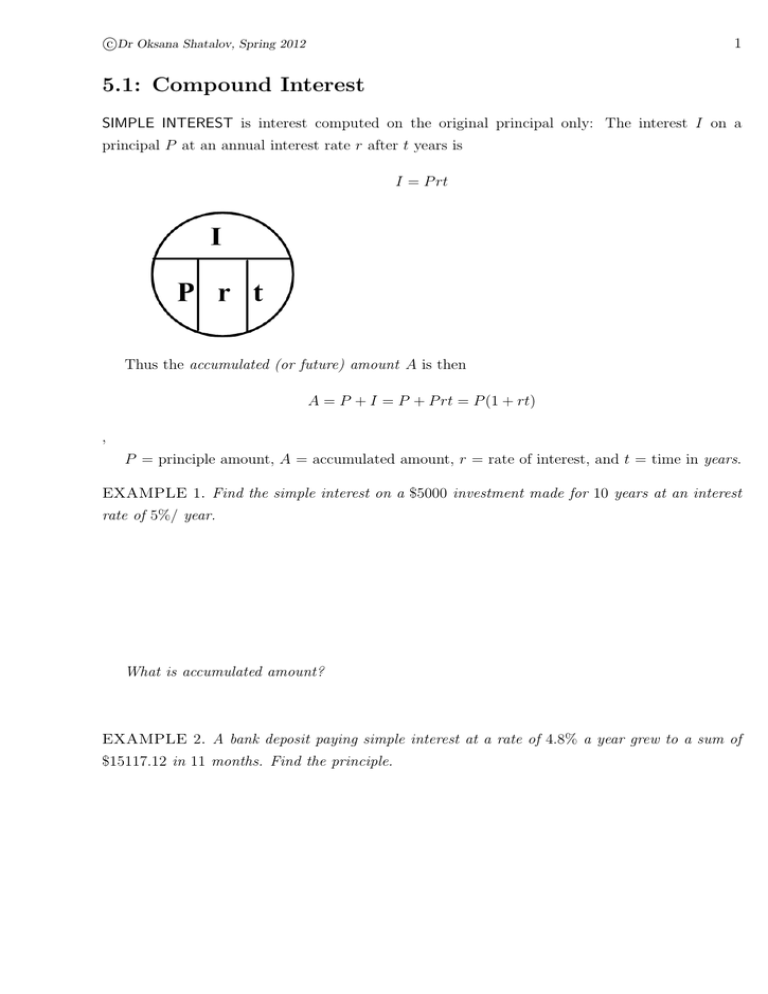
c Dr Oksana Shatalov, Spring 2012 1 5.1: Compound Interest SIMPLE INTEREST is interest computed on the original principal only: The interest I on a principal P at an annual interest rate r after t years is I = P rt Thus the accumulated (or future) amount A is then A = P + I = P + P rt = P (1 + rt) , P = principle amount, A = accumulated amount, r = rate of interest, and t = time in years. EXAMPLE 1. Find the simple interest on a $5000 investment made for 10 years at an interest rate of 5%/ year. What is accumulated amount? EXAMPLE 2. A bank deposit paying simple interest at a rate of 4.8% a year grew to a sum of $15117.12 in 11 months. Find the principle. c Dr Oksana Shatalov, Spring 2012 2 EXAMPLE 3. Determine the simple interest rate at which $3000 will grow to $3150 in 7 months. COMPOUND INTEREST is earned interest that is periodically added to the principal. With compound interest money grows faster than with simple interest. Formula for compounded interest: r mt A=P 1+ m P = principle amount, A = accumulated amount, r = rate of interest, t = time in years, m = number of times a year it is compounded. OR....you could use the TVM Solver, which is under FINANCE feature on your calculator: To get FINANCE: APPS 1. • N = number of compounding periods = (number of years) *(P/Y) = mt m is how often the money is compounded in one year; t is how many years the money is compounded • I% = annual interest rate in percentage • PV = present value of money, principal Don’t convert to decimal form! Cash inflows are positive; cash outflows are negative. Investment is an outflow. • PMT = payment per period PMT=0 for computing compound interest • FV = future value, accumulated amount • P/Y = number of payments per year • C/Y = number of times compounded per year = m • PMT:END BEGIN should be set to END for this class (means that payments made at the end of each period) Input all known values, move the cursor to the unknown and press ALPHA ENTER to solve. c Dr Oksana Shatalov, Spring 2012 3 EXAMPLE 4. David invested $500, 000 in an account at an interest rate of 8%, compounded daily. How much money David will have in the account after 5 years? N = I% = PV = PMT = FV = P/Y = C/Y = EXAMPLE 5. Solve the previous example if the interest rate is compounded • weekly • monthly • quarterly • semiannually EXAMPLE 6. Morgan wants to put $800 in an account compounded monthly. If she wants to have a total of $1000 in 4 years, what interest rate must the bank account have? N = I% = FV = PV = P/Y = PMT = C/Y = c Dr Oksana Shatalov, Spring 2012 4 EFFECTIVE RATE OF INTEREST The Effective Rate of interest, or APR (Annual Percentage Rate) or AYP (Annual Percentage Yield), is the simple interest rate that would produce the same accumulated amount in 1 year as the nominal1 rate compounded m times a year. This gives us a common basis for comparing interest rates. When paying interest we want the lowest effective rate, and when earning interest we want the highest effective rate. We will use Calculator to find the effective rate: Under FINANCE, scroll down to Eff( and enter the percent interest and the number of times it is compounded in one year: Eff(I,m). EXAMPLE 7. Find the effective yield of an account with a nominal rate of 7.5% compounded monthly? compounded weekly? EXAMPLE 8. Which would give you a better rate of return: 4.42% compounded quarterly or 4.4% compounded daily? 1 “nominal” means the stated interest rate on an account.
